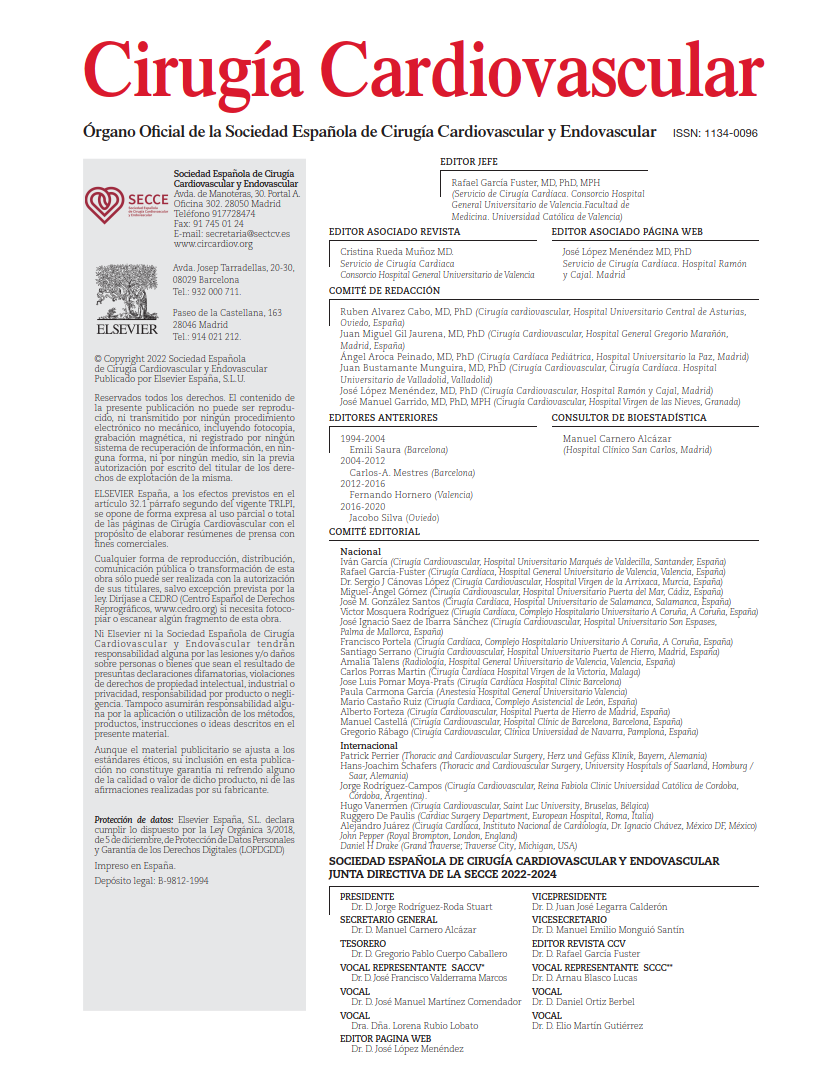Significant MR is a common comorbidity in patients with severe aortic stenosis (AS). It is estimated that 20% to 30% of patients with AS present with moderate or severe MR, posing a significant therapeutic dilemma in the current era of transcatheter aortic valve implantation (TAVI). While surgical aortic valve replacement allows simultaneous correction of both lesions, TAVI typically leaves MR untreated, raising concerns about its prognostic implications and the potential need for additional mitral interventions.
In this context, Brown and colleagues conducted a retrospective observational analysis of a large cohort of 2250 consecutive patients undergoing TAVI for symptomatic severe AS between 2012 and 2021. A total of 14.6% of patients had moderate or greater MR at baseline. After excluding those without follow-up echocardiography, the evolution of MR at 1 year, its impact on survival, and the predictors of MR persistence or worsening were analyzed.
The findings are clinically meaningful. Baseline significant MR was associated with reduced survival (46.2% at 5 years vs 58.7% in patients without significant MR) and with a higher rate of heart failure rehospitalization. At 1 year, 68% of patients with significant MR demonstrated improvement (< moderate), whereas 32% had persistent or worsening MR. Additionally, 7% of patients without significant MR before TAVI developed moderate or greater MR during follow-up. Overall, 11% of the cohort exhibited persistent or new-onset significant MR, and this subgroup experienced the lowest observed survival in the study (as low as 33% at 5 years).
Multivariable analysis identified several clinical predictors of MR progression or persistence, including older age, female sex, left ventricular dysfunction, prior acute coronary syndrome, concomitant moderate or greater aortic insufficiency, pulmonary hypertension, moderate or greater tricuspid regurgitation, low-flow low-gradient AS, and lower mean aortic transvalvular pressure gradients. In contrast, procedural variables (prosthesis type, size, access route, pacemaker requirement, etc.) were not associated with MR evolution, underscoring that MR progression after TAVI likely reflects advanced underlying cardiomyopathy rather than technical aspects of the procedure.
An editorial by Hameed and Mehaffey further reinforces this interpretation by emphasizing the importance of MR etiology. Atrial functional MR—linked to left atrial dilation in the context of atrial fibrillation and preserved ejection fraction—appears more likely to improve after TAVI due to afterload reduction. In contrast, ventricular functional MR and primary degenerative MR show a poorer structural and prognostic response. Hence, MR improvement after TAVI is heterogeneous and largely influenced by its underlying cause.
COMMENTARY:
The findings of this study, supported by the accompanying editorial, provide compelling evidence for the need to comprehensively assess MR in patients undergoing TAVI. While two-thirds of patients with significant MR show improvement post-TAVI, one-third either remain with or develop significant MR, which markedly worsens prognosis. In this subgroup, 5-year survival dropped dramatically.
Importantly, the prognostic factors identified relate to the patient’s clinical profile rather than the procedure itself, highlighting the importance of careful patient selection and risk stratification. In patients with functional MR likely to improve after correction of AS, TAVI may represent a reasonable first-line strategy. However, in those with primary MR or predictors of poor evolution (e.g., severe ventricular dilation, pulmonary hypertension, low-flow low-gradient AS), a more comprehensive treatment plan addressing both valves—either simultaneously or in staged fashion—may be warranted.
In the absence of randomized studies defining the optimal strategy for managing AS with concomitant MR, this work supports a personalized approach, guided by MR etiology, baseline echocardiographic findings, and overall clinical status. The Heart Team plays a central role in evaluating the appropriateness of isolated TAVI, combined treatment, or enrollment in structured follow-up protocols, particularly for patients at increased anatomic or clinical risk for MR persistence.
REFERENCE:
Brown JA, Iyanna N, Yousef S, Donohue J, Pompeu Sá M, et al. Natural History of Mitral Regurgitation After Transcatheter Aortic Valve Implantation. Ann Thorac Surg. 2025 Jul;120(1):41-49. doi: 10.1016/j.athoracsur.2024.09.008.
Hameed I, Mehaffey JH. The Critical Role of Mitral Regurgitation Etiology in TAVR. Ann Thorac Surg. 2025 Jul;120(1):49-50. doi: 10.1016/j.athoracsur.2024.09.047.



